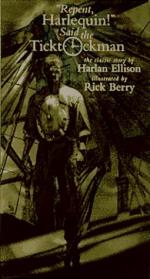|
This section contains 601 words (approx. 2 pages at 400 words per page) |

|
Allusions
Literary allusions are references to familiar characters, real people, events, or concepts used to make an idea more easily understood. Moreover, allusions serve as a sort of intellectual shorthand; by inserting an allusion in a story, the writer succinctly inserts an additional text, or history, or philosophical system into his or her story, in just a word or two. For example, Ellison's opening passage from Thoreau's "Civil Disobedience" not only provides the image of the hero into the story, it also embeds the whole notion of civil disobedience, Thoreau's metaphor of marching to the beat of a different drummer, and the incident of Thoreau's night in jail for his refusal to pay income tax, among other ideas and events. Likewise, by choosing to use Bolivar, Napoleon, Robin Hood, Dick Bong, Jesus, and Jomo Kenyatta as descriptors of how the lower classes thought of the Harlequin, Ellison is able...
|
This section contains 601 words (approx. 2 pages at 400 words per page) |

|




